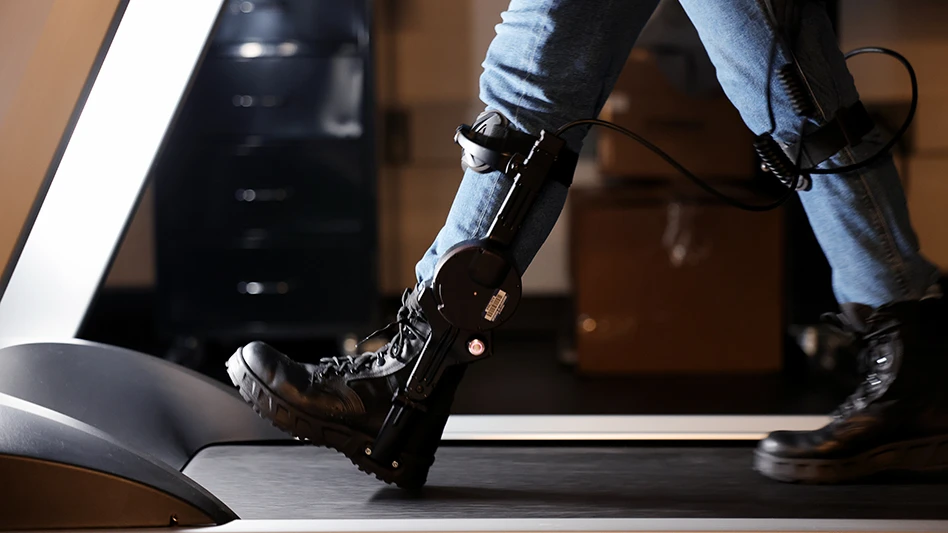
Brenda Ahearn, University of Michigan Engineering
Ankle exoskeletons that can help people extend their endurance are a step closer to reality with a new control algorithm, developed at the University of Michigan (U-M), that could enable future exoskeletons to automatically adapt to individual users and tasks. This would reduce or eliminate the need for manual recalibration.
Current exoskeletons are limited because they must be tailored to a single user performing a single task, like walking in a straight line. Any changes require a lengthy set of manual readjustments. The new control algorithm demonstrates the ability to handle different speeds, as well as changes in gait between running and walking. It could pave the way for exoskeletons that are better able to handle the uncertainties of the real world.
"This particular type of ankle exoskeleton can be used to augment people who have limited mobility," says Leia Stirling, U-M associate professor of industrial and operations engineering and robotics and senior author of the study published in the journal PLOS ONE. "That could be an older adult who wouldn’t normally be able to walk to the park with their grandkids. But wearing the system, they now have extra assistance that enables them to do more than they could before."

The control algorithm directly measures how quickly muscle fibers are expanding and contracting to determine the amount of chemical energy the muscle is using while doing its work. Then, it compares that measurement with a biological model to determine the best way to assist.
Measuring muscle physiology directly is a key departure from current methods, which use broader measures of motion. Going straight to the source of motion could result in more accurate measurements over a larger range of movements with far less computing power required.
Stirling and first author Paul Pridham, senior research area specialist in industrial and operations engineering, zeroed in on the ankle because it plays a key role in mobility. Assisting the muscles in the ankle could have a dramatic impact on our ability to walk further and faster.
Since the research was done during COVID-19 restrictions, testing with human participants wasn't possible. Instead, the team used data on existing ankle exoskeleton devices and muscle dynamics from previous studies to simulate, test and adjust the algorithm to be more responsive to changes in speed and gait.
Human testing is an important next step, and will require the measurement of muscle fibers in real time using ultrasound. While much work and refinement remains, the researchers are confident that the new avenue of research will one day help people on the ground.
"This has the potential to help just about anyone," Pridham says. "From someone who walks a lot for their job, to individuals in the military that perform tasks for long periods of time, to people with muscular disorders that need some extra assistance, and the elderly who need help day-to-day."
The study was funded by the Under Secretary of Defense for Research and Engineering under Air Force Contract No. FA8702-15-D-0001.
Study: Ankle exoskeleton torque controllers based on soleus muscle models (DOI: 10.1371/journal.pone.0281944)
Latest from Today's Medical Developments
- Significant expansion for Intricon
- REGO-FIX’s powRgrip toolholding system
- Birk Manufacturing achieves ISO 13485 recertification
- AdvaMed’s Medical Innovation Agenda for the 119th Congress
- SW North America's BA 322i twin-spindle CNC
- The role of robotics in precision medical device manufacturing
- Swiss Steel Group’s UGIMA-X machinable stainless-steel sets
- #51 - Manufacturing Matters - The Impact of M&A in MedTech 2024





